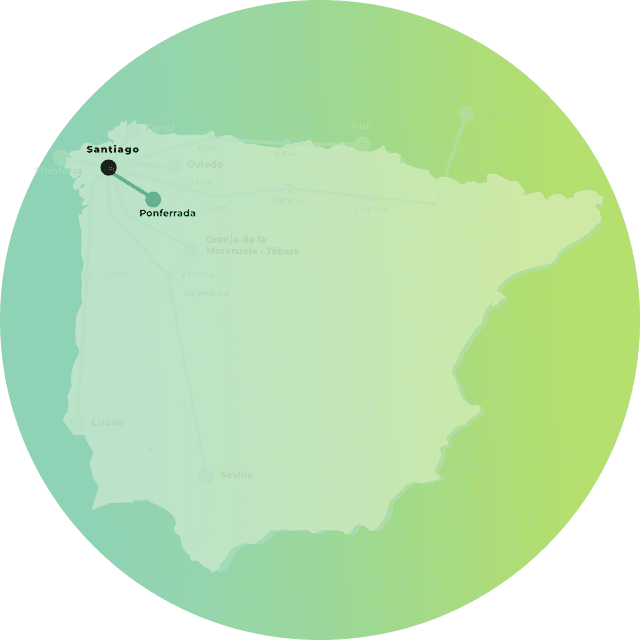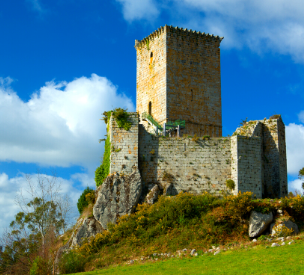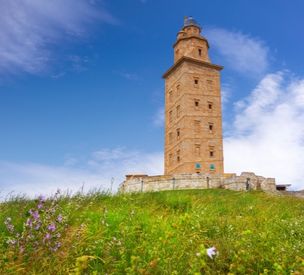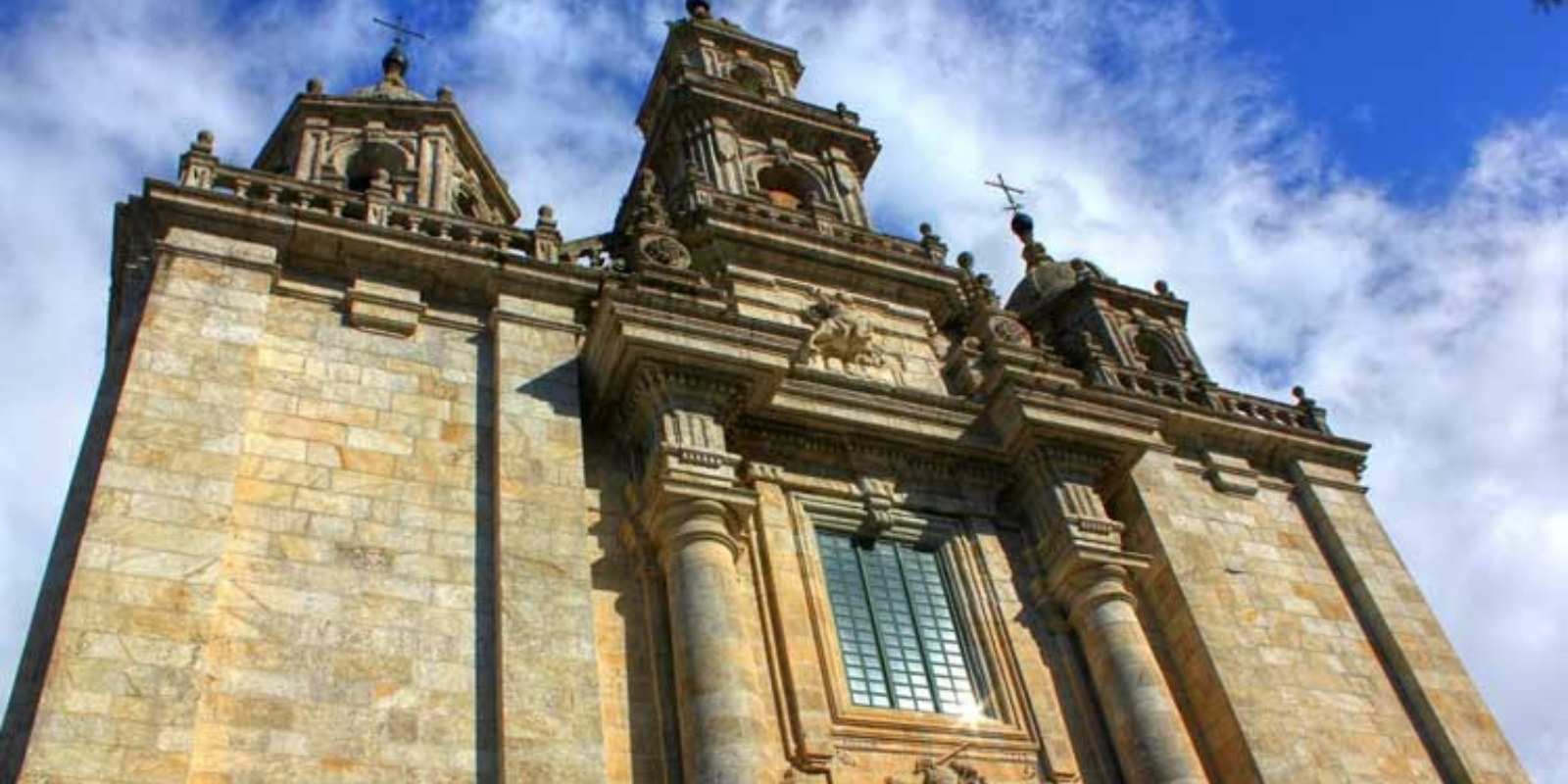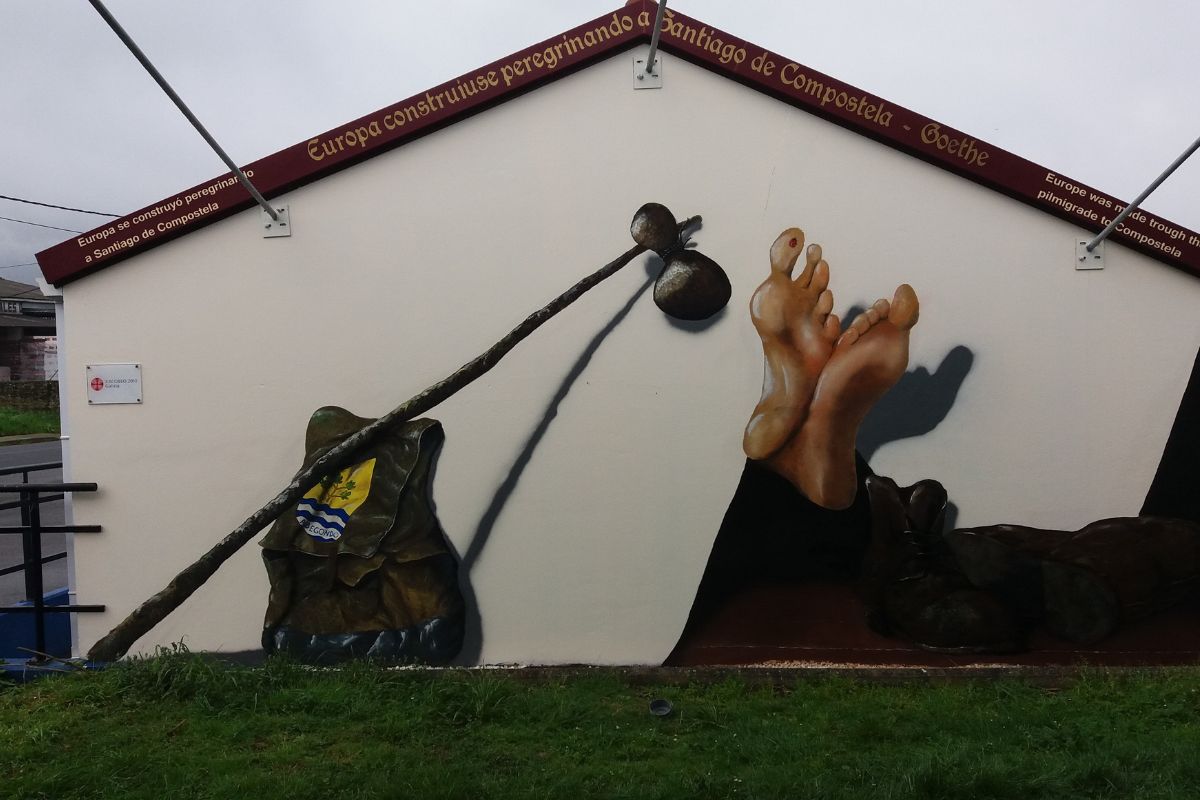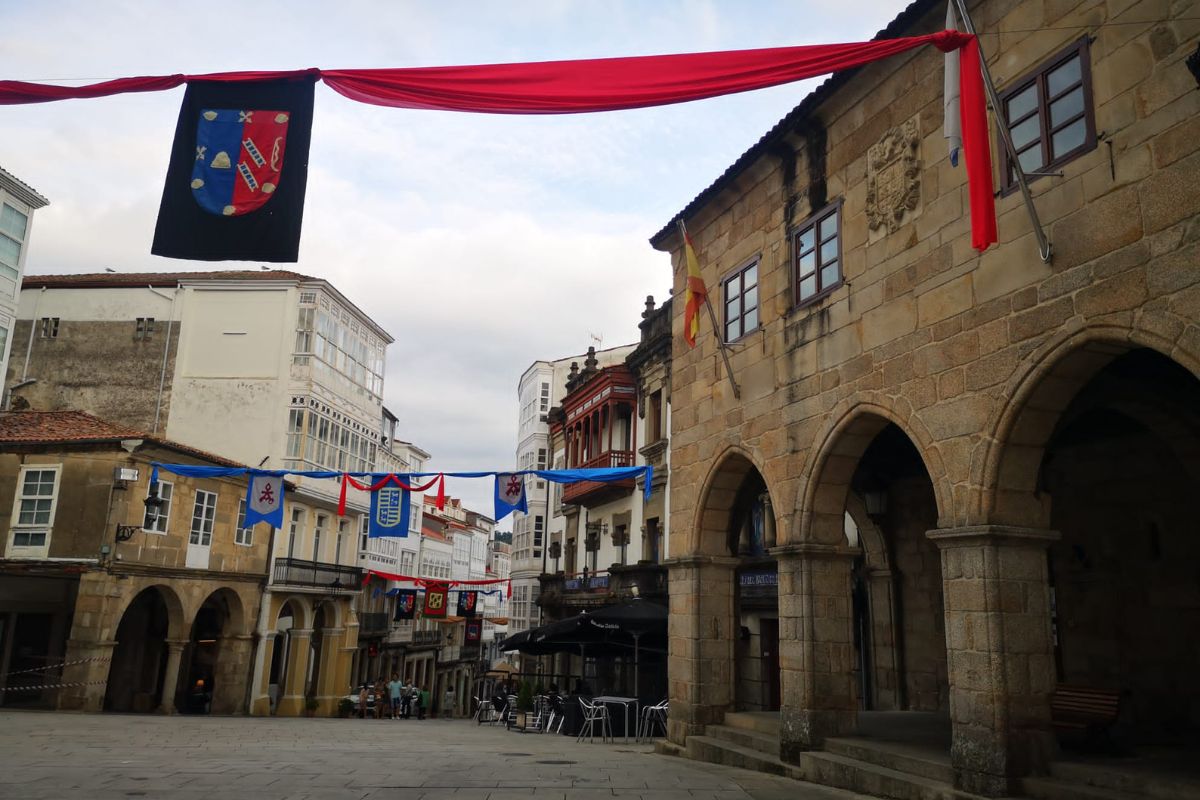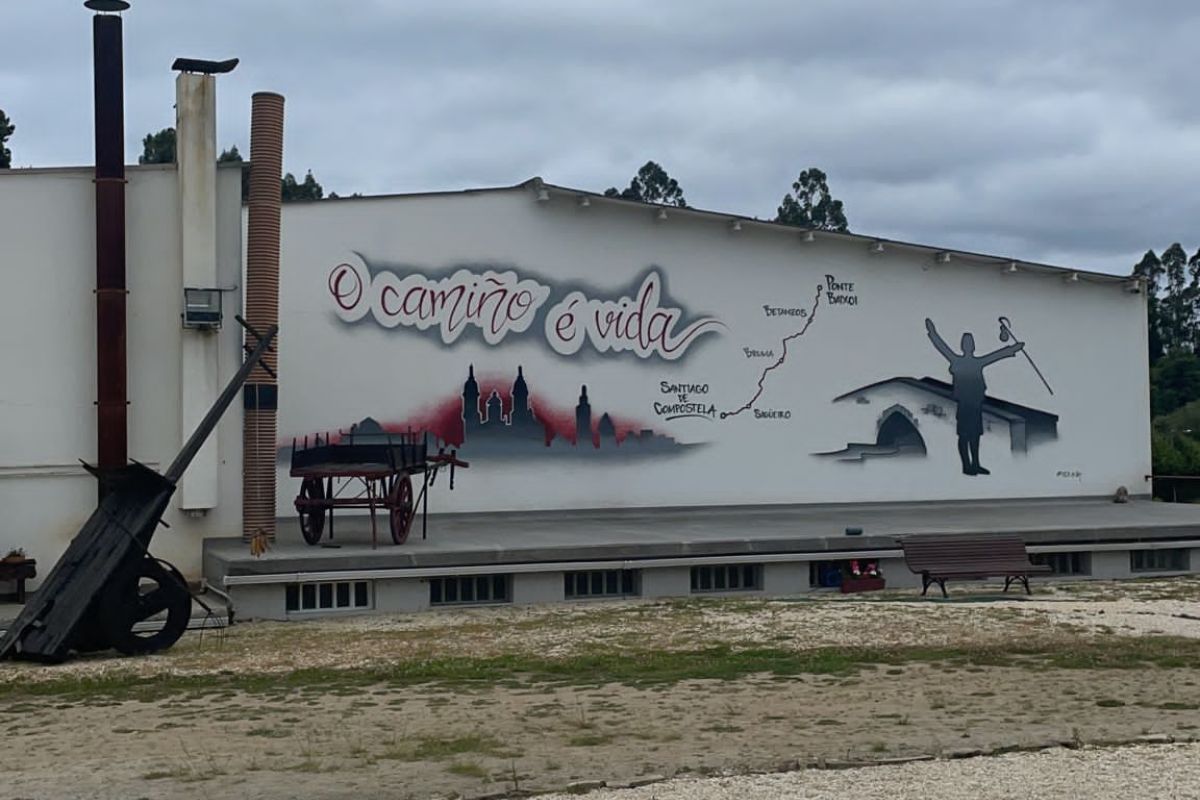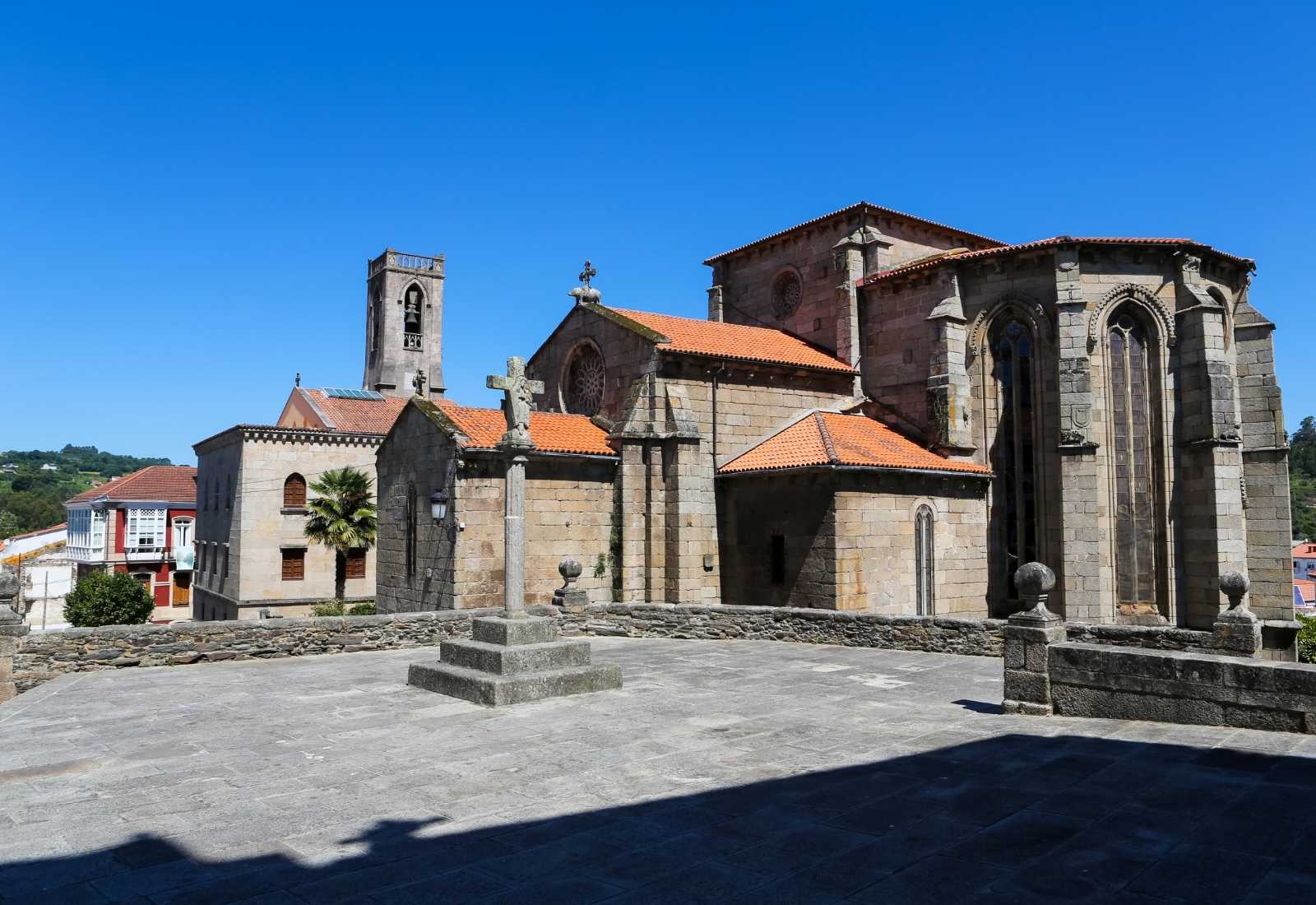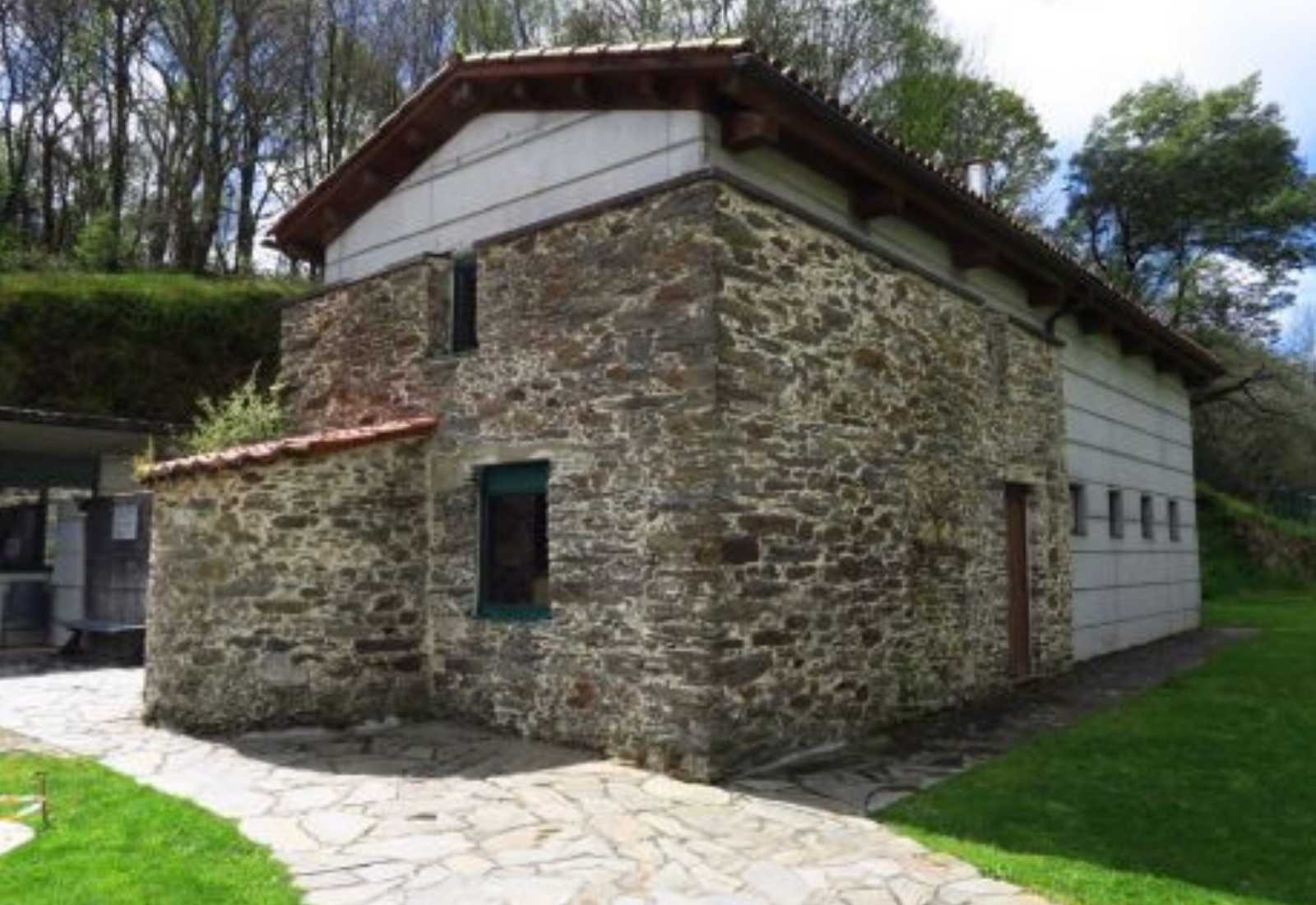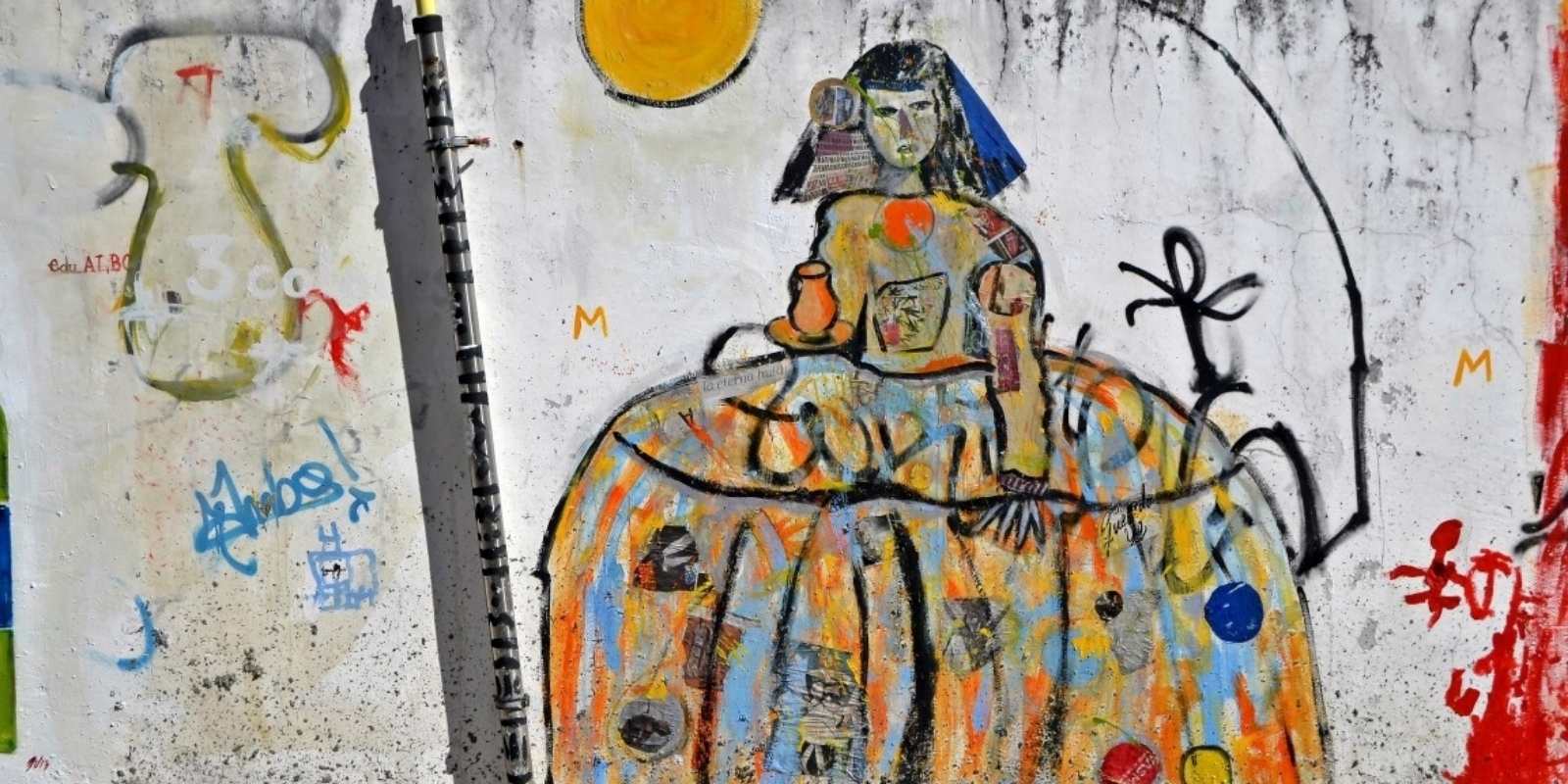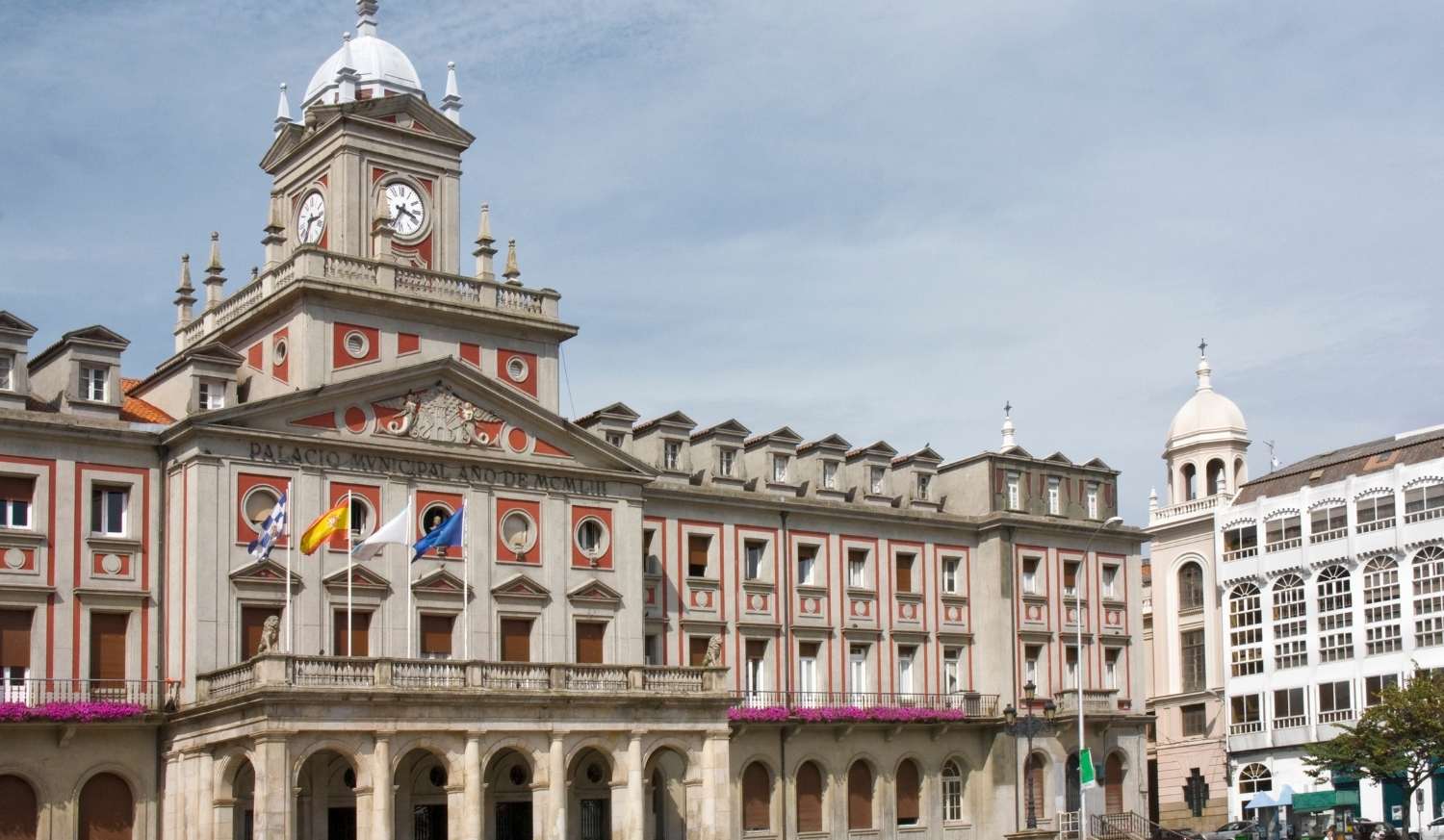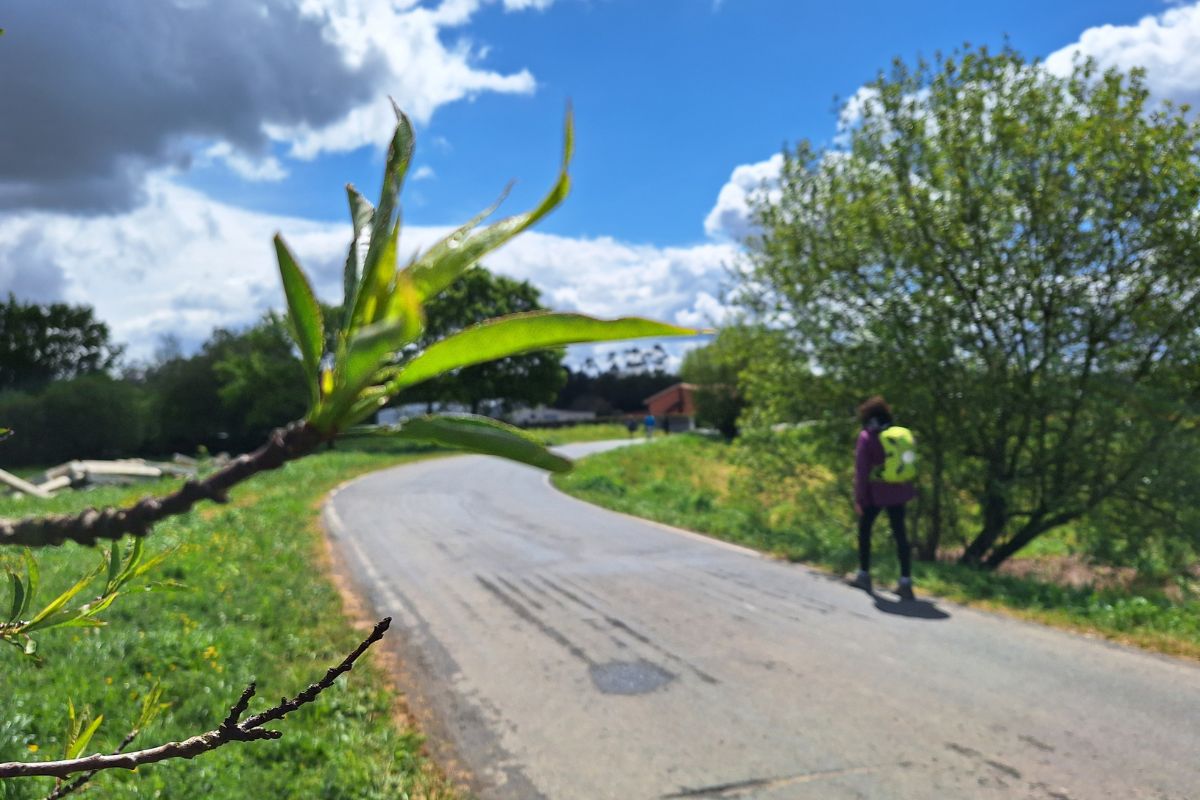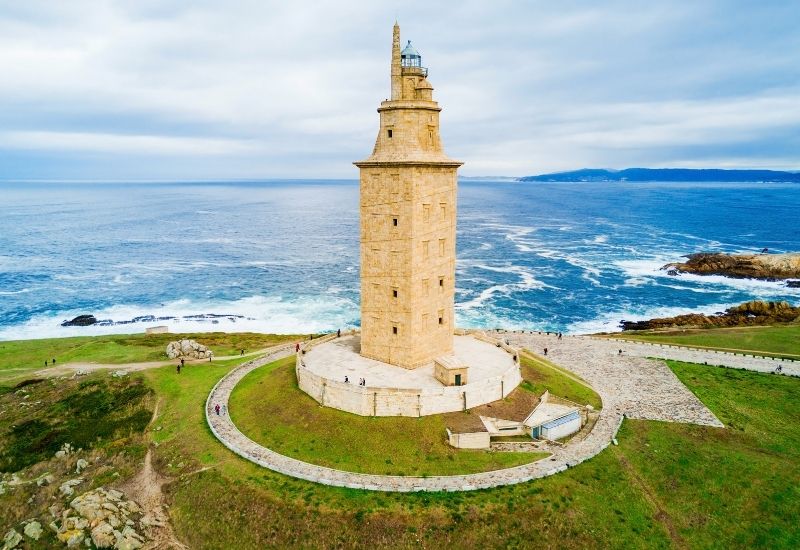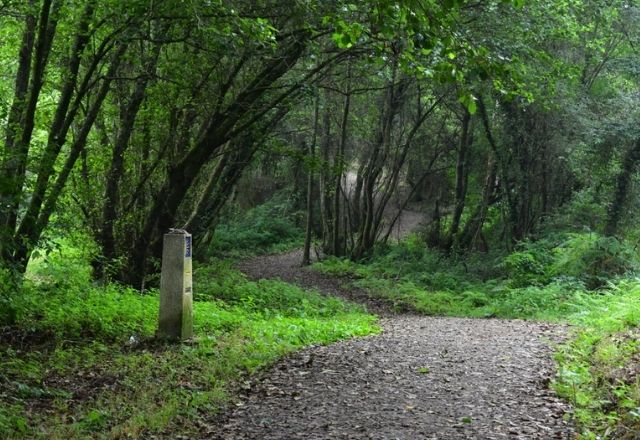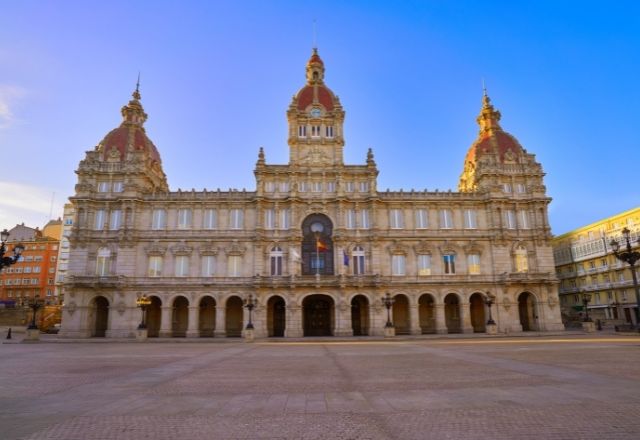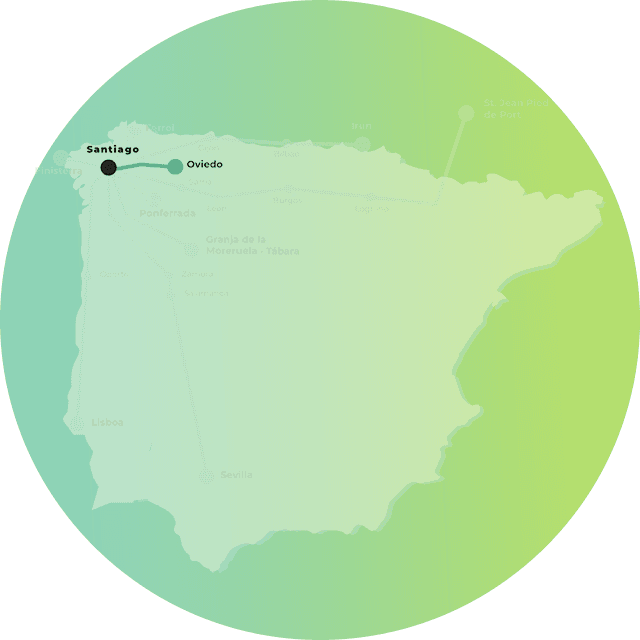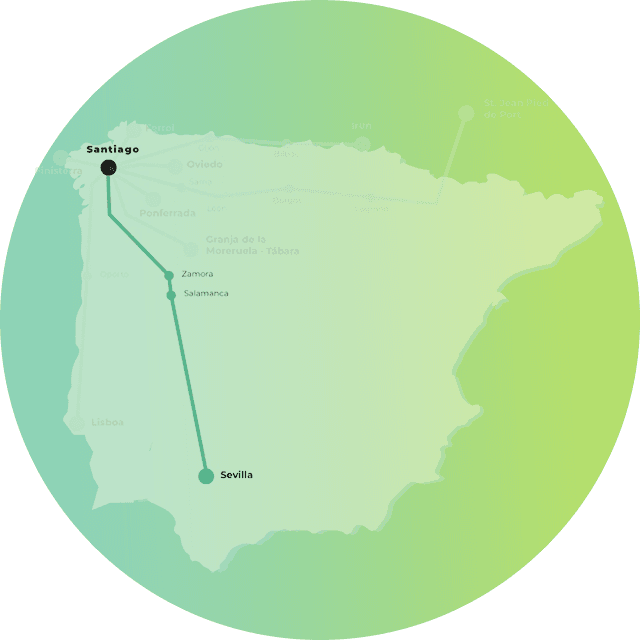The English Way
5 Stages | 114 km from Ferrol
4 Stages | 75 km from A Coruña
The shortest route to Santiago de Compostela.
This is the shortest of all the Camino de Santiago routes, perfect for those seeking a journey of solitude and disconnection.
The English Way is a trip that allows you to reach Santiago de Compostela in just one week while discovering two distinct parts of Galicia: the seafaring life of the estuaries and the tranquility of the small inland villages of Galicia.
Our trips on the English Way
Services we offer on the English Way to Santiago
Included in all our routes
- Accommodation booking selecting the best lodgings according to your budget.
- Luggage transport between stages.
- Practical information about the Camino in a detailed guide.
- Phone assistance en route we’re by your side for any questions or incidents.
- Travel insurance with broad coverage.
On group tours
- Accompanying guides professional support throughout the Camino.
- Support vehicle available during the stages.
Optional services
- Meals and diets, with the option to add breakfasts or half board.
- Private transfers to/from the point you need.
- Bicycle rental (mountain or electric bikes).
Map of the English Way
The map shows the complete route of the English Way, from Ferrol or A Coruña in Galicia to Santiago de Compostela, Spain. This historic pilgrimage route, approximately 114 km from Ferrol or 75 km from A Coruña, passes through towns such as Neda, Pontedeume, and Betanzos.
At the bottom, the elevation profile of the route is illustrated, highlighting the gentle slopes and some inclines that traverse Galicia’s coastal and rural landscapes.

Information about the English Way
Why choose the English Way?
A route that you can complete in a week.
The English Way is an adventure that is quite different from other Jacobean routes like the French or Portuguese Way. Although more and more pilgrims are choosing this route, it remains a solitary path, perfect if you’re looking for a few days of peace and tranquility.
A simple route that, despite having some considerable ascents, can be comfortably completed if taken at a relaxed pace. The 114 km separating Ferrol from Santiago de Compostela make it the perfect itinerary if you’re looking to complete the Camino de Santiago in just a few days.
This route has two very distinct parts. During the first section, the sea will accompany you, offering spectacular views of estuaries, marshes, ports, beaches, and large towns of historical, monumental, and industrial importance. However, as we move away from the coast, the landscape becomes increasingly rural, with large towns giving way to solitary villages, forests, and quiet trails typical of the interior of Galicia.
What to see and do on the English Way?
Where to start the English Way?
From Ferrol
Ferrol is today the most popular starting point for beginning the English Way, from where there is a distance of 114 kilometers to Santiago de Compostela. The English Way from Ferrol is for those pilgrims who wish to complete the entire Camino de Santiago in just one week.
You might be interested: How to get to Ferrol?
From A Coruña
The traditional starting point of the English itinerary is located in the city of A Coruña. Thousands of pilgrims arrived by sea during the Middle Ages, from where they tackled the 75 km that separate the city from Santiago de Compostela. However, the Camino Inglés from A Coruña is not very busy nowadays: the main reason is that the distance is not sufficient to obtain the Compostela certificate, as it does not reach 100 kilometres.
Nevertheless, a recent agreement between the Cathedral Chapter and the City Council of A Coruña grants that pilgrims arriving from this city to Santiago de Compostela are entitled to obtain the Compostela.
You might be interested: How to get to A Coruña?
Requirements to obtain the Compostela when starting from A Coruña
- If you don’t live in A Coruña (municipality): You must walk about 25 km of the Camino in your country of origin plus the A Coruña–Santiago section to complete 100 km. This only applies to European citizens with officially recognised Jacobean routes in their country. Anyone who does not meet these conditions (non-Europeans or those without a Jacobean route in their country) cannot obtain the Compostela from A Coruña.
- If you are a resident of A Coruña (municipality): Present your ID card (DNI, Passport) that proves your address in the city (the province alone is not enough). The Chapter suggests, “out of devotion”, visiting some local Jacobean sites, such as the Church of Santiago, but certification would not be mandatory.
Another way would be to walk the Celtic Camino if you live in Ireland or the United Kingdom.
This is the most up-to-date information we have; however, we recommend you contact your local Camino association to see whether they have any agreements (for example, American Pilgrims on the Camino, Canadian Company of Pilgrims, etc.).
Stages of the English Way of Santiago
The English Way of St James is one of the most distinctive and enchanting Jacobean routes, shaped by its historic link with pilgrims who arrived by sea. Spanning roughly 114 kilometres and 5 stages from Ferrol, or 75 kilometres and 4 stages from A Coruña, on the way to Santiago de Compostela, the path leads you through coastal scenery, rolling green hills and Galician villages rich in tradition.
If you choose to start in Ferrol, have several days and fancy slightly shorter walks, you can split the first stage Ferrol – Pontedeume (28.9 km) in two:
- Ferrol – Neda (14.4 km)
- Neda – Pontedeume (14.5 km)
Your Camino would thus grow from 5 to 6 stages.
Each section offers a unique experience, from estuaries and rural trails to the grandeur of Santiago. Follow these links to discover the main stages, their distances, points of interest and handy tips to make the very most of this unforgettable adventure.
History of the English Route
The history of this route originated from the arrival of pilgrims by sea, mainly from Irish and English ports, which is where the name comes from. Let’s take a closer look at its history.
Origins
This maritime route gets its name from the first travelers who traversed it. Its history dates back to the Middle Ages, when all of Europe had heard about the discovery of the remains of the Apostle James. Many pilgrims from Ireland, Great Britain, Nordic countries, Germany, the Netherlands, Belgium, northern France and even Iceland, chose this maritime route to reach Galician ports and continue their pilgrimage on land to Compostela.
Ferrol, A Coruña, and other towns, which in the Late Middle Ages had a strong connection to the sea, became the most important places of arrival for pilgrims at the time. So much so that hospitals were even built to assist them. At that time, the fragility of the ships and the threat of pirate attacks made the journey a real odyssey.
Centuries of Glory
Maritime pilgrimages experienced significant growth, especially during the Hundred Years’ War in the 14th and 15th centuries, when the ongoing conflicts between France and England made sea travel safer than land routes. This led to great advancements in ships and navigation techniques.
The scale of the English route became so large that, in 1428, more than 4,000 British pilgrims embarked toward Galicia, distributed across 61 ships. According to historians, most of the pilgrims came from the working class. The cost of the trip was equivalent to a month’s salary for an average worker, a relatively affordable price.
Subsequent Crisis and Current Revival
Like the other Jacobean routes, the English Way also fell into oblivion from the 16th century onward. It wasn’t until the late 20th century that public initiatives were taken to revitalize, promote, signpost, and build hostels along the route.
Frequently asked questions about the English Way
Yes, definitely. All Jacobean routes are very safe, well signposted and pass through inhabited places. The English Way is no exception, and it is a very safe route.
The English Way, with 5 stages and 114 kilometres from Ferrol, or 4 stages and 74 kilometres from A Coruña, is not considered to be very difficult. However, there are a couple of stages somewhat more demanding than others:
- Pontedeume – Betanzos.
This stage, although shorter in distance, includes several uphill and downhill stretches that make it one of the toughest on the English Way. The steep slopes, especially when leaving Pontedeume and approaching Betanzos, require considerable effort. The mountainous terrain and constant elevation changes make this stage physically demanding, but also very rewarding in terms of views and scenery. - Betanzos – Hospital de Bruma
Considered by many pilgrims to be the toughest stage of the English Way, this section combines considerable distance with terrain that includes several long and steep slopes. Along the way, you will pass through rural areas with few services, which adds an additional challenge in terms of preparation and provisioning. The ascent to the Alto de Vizo is one of the most demanding points of this stage, testing the walkers’ endurance.
The English Way of Saint James is one of the shortest routes of the Camino de Santiago in Spain, with about 114 km divided, generally, in 5 stages. Therefore, divided like this, it takes 5 days to complete the English Way on foot. From A Coruña, another possible start, with 74 km, it will take you 4 days.
Each stage would be the distance you walk in one day, from the starting point to the end of the walk, where you will spend the night. The stages can vary in distance and difficulty, and it is important to note that they can be adjusted according to your pace and physical condition. Some pilgrims choose to divide certain long or hard stages, or lengthen those that are shorter or easier to walk. It all depends on having a place to sleep.
The total kilometres of the English Way are about 114 km from Ferrol. From A Coruña, another possible start, are 74 km. Keep in mind that this distance may vary depending on the possible variants or complementary and alternative routes that the pilgrim decides to take during the route.
The English Way of Saint James is divided into 5 stages. It starts in Ferrol and has 114 kilometres to Santiago de Compostela. It can also start in A Coruña, with 74 kilometres ahead and 4 stages. Keep in mind that this distance may vary depending on the possible variants or complementary and alternative paths that the pilgrim decides to take during the route.
Each stage would be the distance you travel in a day, from the town of beginning to the end of the walk, where you will spend the night. The stages can vary in distance and difficulty, and it is important to note that they can be adjusted according to your pace and physical condition. Some pilgrims choose to divide certain long or hard stages, or lengthen those that are shorter or easier to walk. It all depends on having a place to sleep.
In all the routes and stages of the Camino de Santiago there is a lot of beauty, nature and heritage. Of course, all this, among dozens of kilometres, with sections and stages easier to walk and others more complicated. The latter are characterized, above all, by having large slopes and sometimes accumulate many kilometres of ascent.
Here we want to inform you of the stages and climbs most commented by their physical demand of the English Way. Some of them, for many, are part of the hardest stages of the Camino de Santiago.
- Pontedeume – Betanzos
This stage, although shorter in distance, includes several stretches of ups and downs that make it one of the hardest of the English Way. The steep slopes, especially when leaving Pontedeume and approaching Betanzos, require considerable effort. The mountainous terrain and constant elevation changes make this stage physically demanding, but also very rewarding in terms of views and scenery. - Betanzos – Hospital de Bruma
Considered by many pilgrims to be the toughest stage of the English Way, this section combines considerable distance with terrain that includes several long and steep slopes. Along the way, you will pass through rural areas with few services, which adds an additional challenge in terms of preparation and provisioning. The ascent to the Alto de Vizo is one of the most demanding points of this stage, testing the walkers’ endurance.
Some stages of the English Way stand out for their natural beauty, historical richness and cultural significance. Here is a selection of the most beautiful stages of the English Way:
- Pontedeume – Betanzos
This stage is known for its natural beauty and rich historical heritage. The route takes you through dense Galician forests, crossing rivers and passing charming villages. The arrival in Betanzos, one of Galicia’s most historic towns, is a highlight. Here, you can enjoy its impressive old town, full of medieval churches and cosy squares.
- Betanzos – Hospital de Bruma
Although this is one of the longest and most demanding stages, it is also one of the most beautiful. The rural Galician landscape unfolds in all its splendour, with rolling hills, thick forests and small villages that seem to be frozen in time. The tranquil atmosphere and natural surroundings make this stage a truly special experience for pilgrims.
- Hospital de Bruma – Sigüeiro
This stage offers a perfect combination of nature and tranquillity. Along the way, you will enjoy the typical rural landscapes of Galicia, with green fields, streams and forests. Sigüeiro, a small charming village, marks the end of this stage, preparing you for the last journey to Santiago.
The English Way of Saint James has two possible starts: from Ferrol, or from A Coruña, both cities in the province of A Coruña. Therefore, they are two routes with different stages at the beginning, although later they converge.
- From Ferrol (114 km)
- Ferrol – Pontedeume: 28.9 km
- Pontedeume – Betanzos: 19.9 km
- Betanzos – Hospital de Bruma: 23.4 km
- Hospital de Bruma – Sigueiro: 24.5 km
- Sigueiro – Santiago: 16.6 km
- From A Coruña (74 km)
- A Coruña – Sergude: 20 km
- Sergude – Hospital de Bruma: 13 km
- Hospital de Bruma – Sigueiro: 24.5 km
- Sigueiro – Santiago: 16.6 km
This division can be modified, depending on the preferences and possibilities of each person, always bearing in mind to have a place to spend the night.
The English Way of Saint James has two possible starting points: in Ferrol, with 114 km, or in A Coruña, with 74 km, both in the province of A Coruña.
Posts related to the English Way
All the routes of the Camino de Santiago
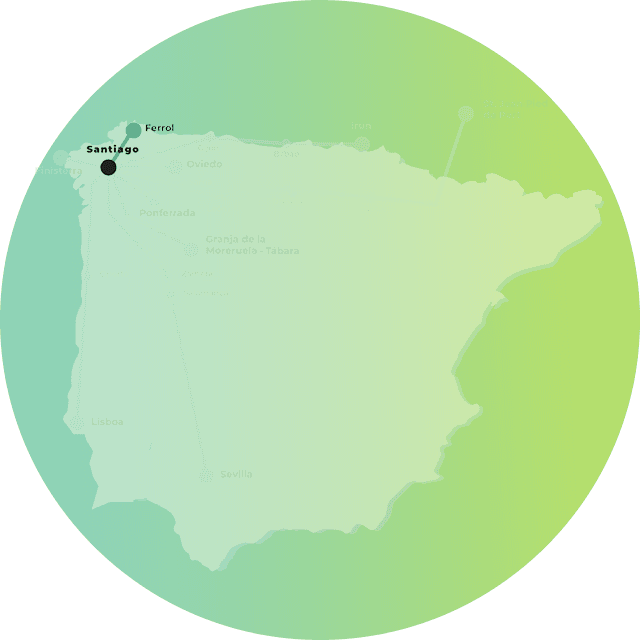
English Way
From Ferrol to Santiago de Compostela. Delve into the culture of villages of great military, naval and historical importance. 5 Etapas | 125 km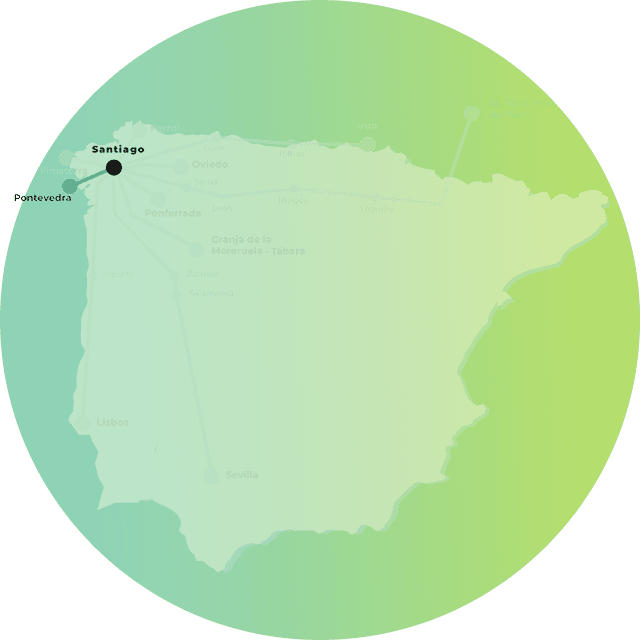
Father Sarmiento Way
The Father Sarmiento Way links Pontevedra to Santiago de Compostela, offering a scenic journey through beautiful landscapes. 6 stages | 142 km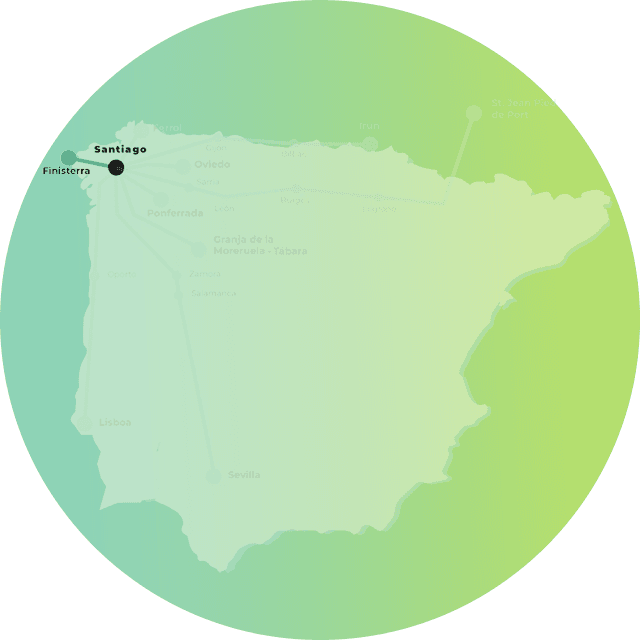
Finisterre and Muxía Way
From Santiago de Compostela to Muxía. A mystical and spiritual journey to the ends of the Earth 5 stages | 120 km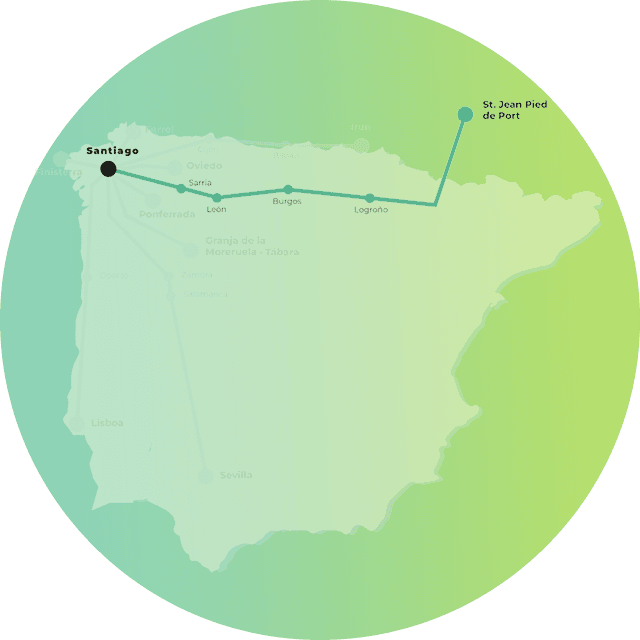
French Way
From Saint-Jean-Pied-de-Port to Santiago, trace Charlemagne’s path through the Pyrenees and trek 800 km on the French Way. 33 stages | 768 km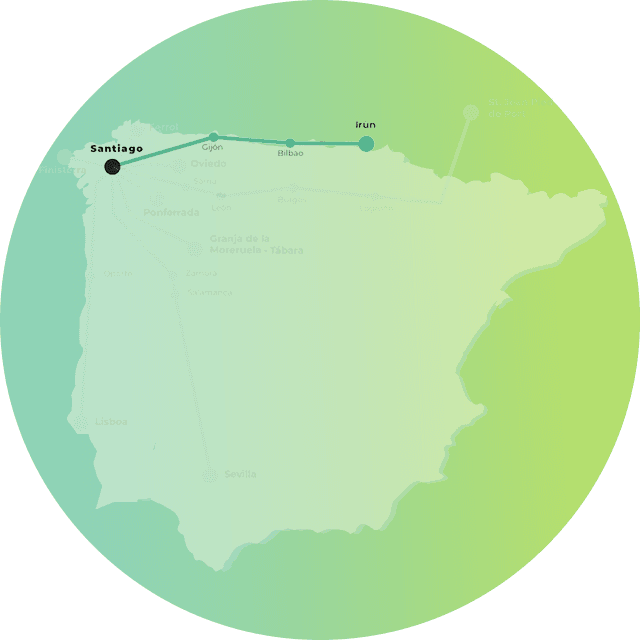
Northern Way
From Santiago de Compostela to Muxía. An unforgettable experience with breathtaking scenery 34 Stages | 820 km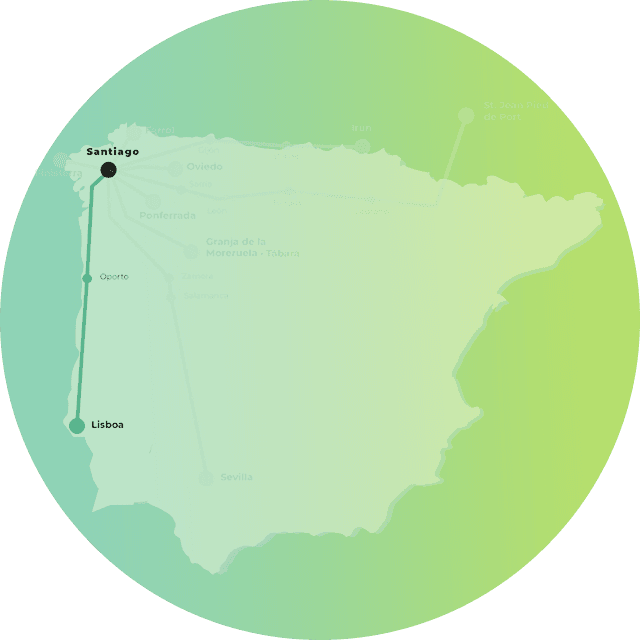
Portuguese Way
Starts in Lisbon and leads to Santiago de Compostela, offering a scenic journey through charming towns, coastal views, and culture. 27 stages | 620 km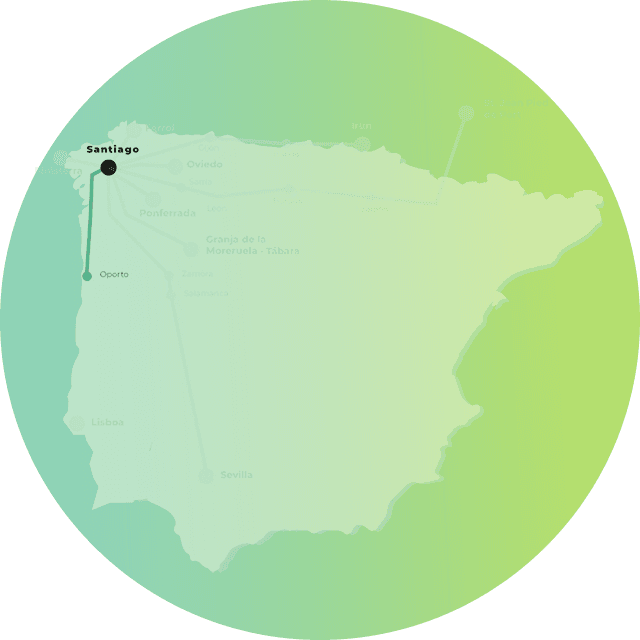
Portuguese Way along the coast
From Oporto to Santiago de Compostela. Total 194 km - 8 stages 8 Stages | 194 km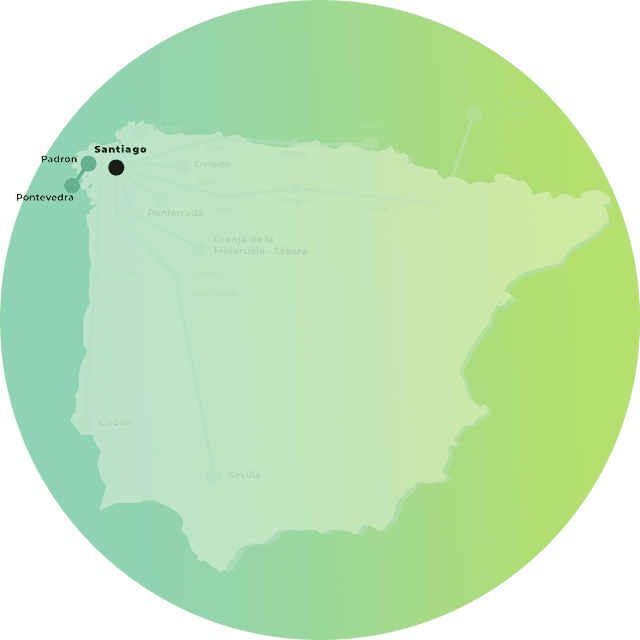
Portuguese Way: spiritual variant
From Pontevedra to Padrón. Total 81 km - 3 stages 3 stages | 81 km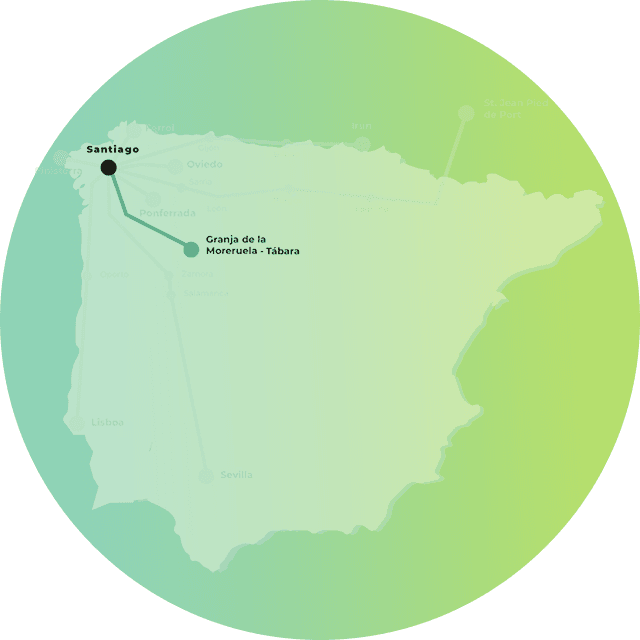
Sanabrian Way
From Granja de Moreruela to Santiago de Compostela. Total 365 km - 13 stages 13 stages | 365 km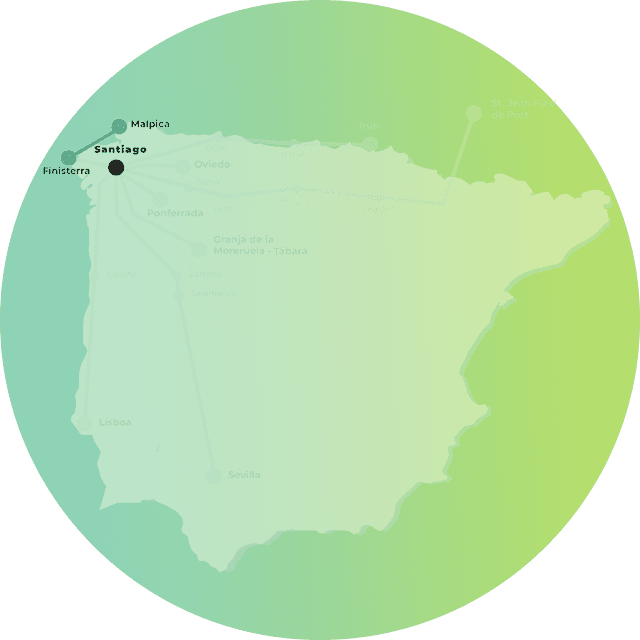
Way of the Lighthouses
From Malpica to Finisterre. A 200-kilometer journey along the coast and through the wildest of nature 8 stages | 195 km